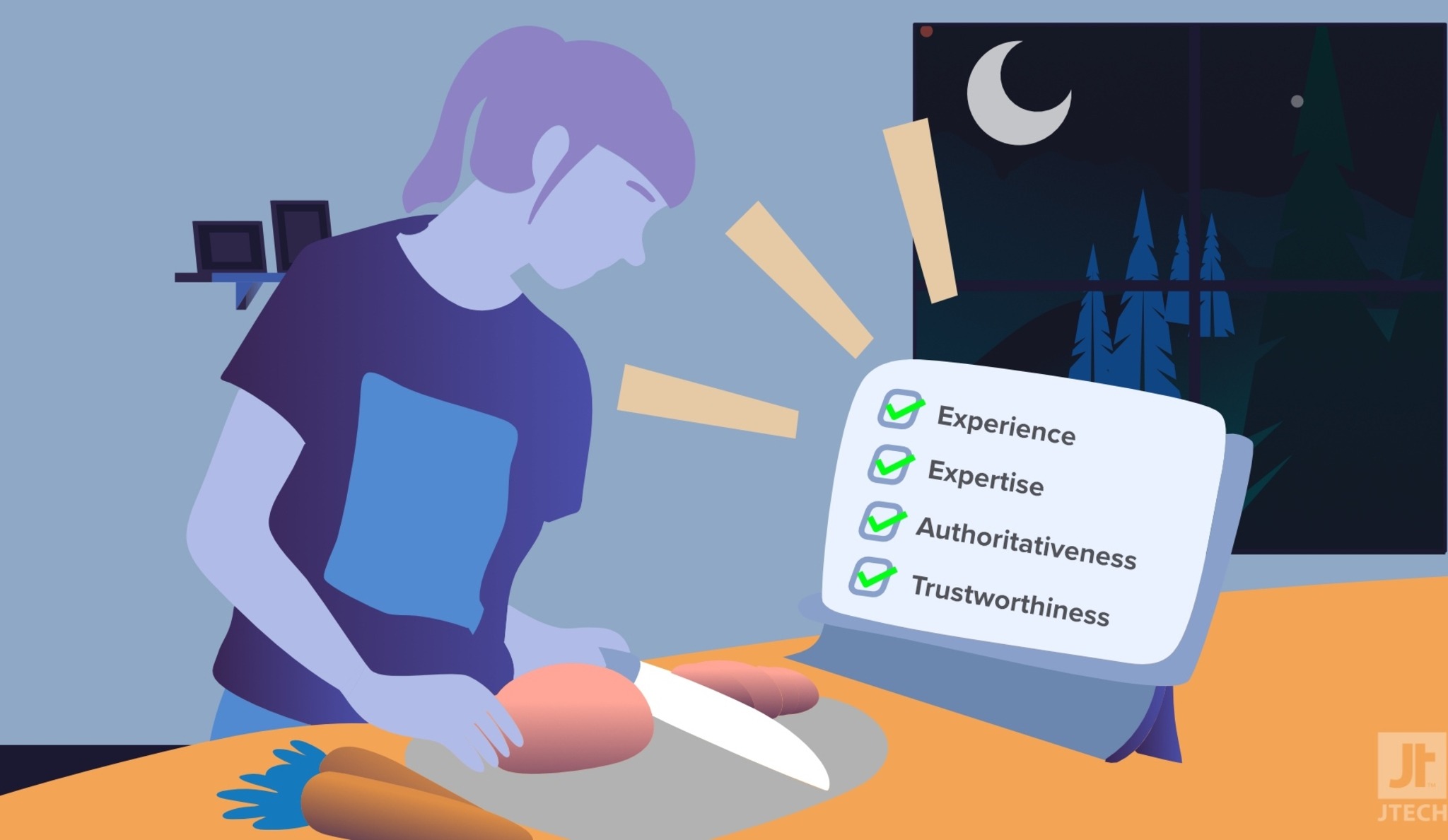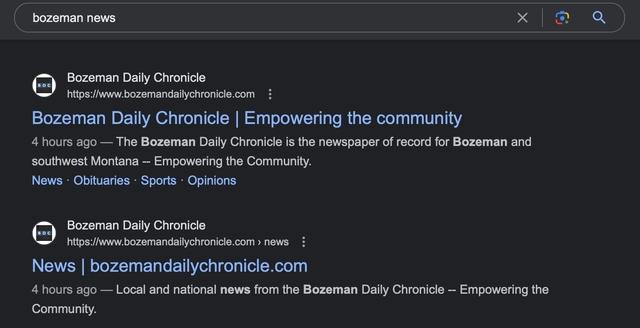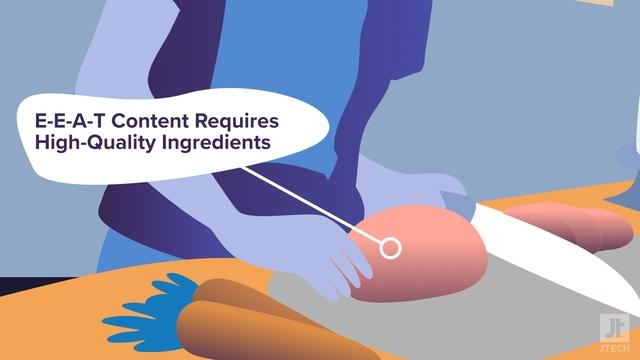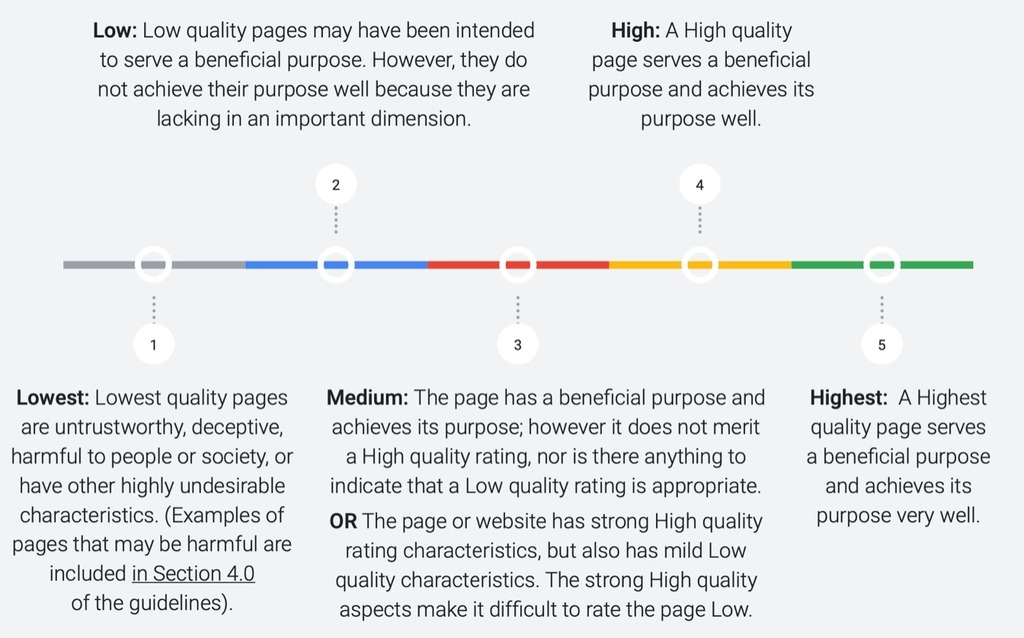
An Up to Date SEO Guide to E-E-A-T Content for Google
Google holds the content it serves to a high standard of genuine, helpful, and human advice. They've been working to understand what real people believe is useful since the launch of their Search Quality Ranker Guidelines in 2013.
In 2014, Google followed its Search Quality Ranker Guidelines with what was then called the ‘E-A-T guidelines’ for content creators. E-A-T stands for ’Expertise,’ ‘Authoritativeness,’ and ‘Trustworthiness.’ The E-A-T guidelines gave creators an effective, simple way to evaluate their content marketing.
Now, Google has updated their Search Quality Ranker Guidelines by adding an additional ‘E,’ for Experience, to E-A-T.
E-E-A-T, or ‘Double-E-A-T' (Google's term), was a direct response to generative AI. Google will use 'Experience' to separate truly trustworthy, helpful content from mass-produced content created with the sole intention of manipulating organic search results.
Update Announcement: Google’s main statements surrounding AI were removed from Google’s E-E-A-T documents in Q1, 2024. However, the central motivation behind the E-E-A-T guidelines remains the same. Our team has updated the information presented in this article to reflect these changes. We have not removed all mentions of generative AI due to the helpful insights they provide into the core motivations behind E-E-A-T.
A Quick Overview of Google’s E-E-A-T Guidelines
Before we get into writing high-quality E-E-A-T content, we will discuss how Google defines each letter. We’ve included a key takeaway from our digital marketing team under each factor.
E - EXPERIENCE
Google defines 'Experience' as having the necessary first-hand/life experience to write on a topic. The key to ‘Experience’ is showing Google that you've developed an understanding of a topic through actual exposure. If you're working with a content marketing agency, their professionals will send marketing content to you for edits and approval. This is your chance to add a unique take, specific work examples, or details only someone in your field would know.
Key Takeaway: Google is more likely to believe that content without evidence of first-hand experience was created to manipulate search results using AI.
E - EXPERTISE
Google defines 'Expertise' as having enough skill or knowledge to write on a topic. The key difference between 'Experience' and 'Expertise' is that Google sets the level of skill required. Any homeowner can get experience tiling their bathroom wall. A professional tile installer will know how to do it right.
Key Takeaway: Marketing content on your website should closely relate to your areas of expertise.

A Search for 'Bozeman News' Will Almost Always Return Several Articles by the Bozeman Daily Chronicle
A - AUTHORITATIVENESS
Google defines 'Authoritativeness' as the extent to which a creator or website is known as a 'go-to' source. A local paper is often best for news searches. A local business’s eCommerce site is more likely to rank in local shopping searches. A search for the best college majors in Bozeman will likely lead to Montana State University.
Key Takeaway: Create a niche-specific website with focused content marketing.
T - TRUSTWORTHINESS
Trustworthiness is the most important metric in E-E-A-T SEO. Each other metric exists to support the 'Trustworthiness' of your website. Google defines 'Trustworthiness' as the accuracy, honesty, safety, and reliability of your website content.
Google gives several specific examples of ‘trustworthiness’ indicators on different types of websites.
- eCommerse sites: The website collects payments securely and has customer service elements
- Review sites: The review site provides content meant solely to inform
- Your Money Your Life (YMYL) sites: The YMYL site contains accurate information that doesn't cause harm
Key Takeaway: Maintain a website that demonstrates the commitment you have to your audience.
The Key to E-E-A-T Content is Asking the Right Questions

Flavor Your Content With Detailed Information
Even with the information provided above, Google's E-E-A-T guidelines are hard to interpret if you don't have SEO experience. Google understands the work content marketing involves.
So, they’ve distilled the meaning of E-E-A-T into three guiding questions for the content creation process. Creating marketing content takes expertise, even with this distillation, but these questions CAN effectively guide the learning process.
Google's support article 'Creating helpful, reliable, people-first content,' advises creators to ask the following questions:
Is WHO Created Your Content Clear to Readers?
Google states that articles with an obvious author typically generate the most trust in your readers. The primary indicator of trust is typically a clear byline. Our web design team includes this feature on all blog pages we develop.
Our experience as a digital marketing agency has also shown that strong, first-person statements that demonstrate knowledge are also beneficial. This aligns with the 'Expertise' and 'Experience' factors in the E-E-A-T guidelines.
Key Takeaway: Clearly state who created the content on your website.
Is HOW Your Content Was Created Clear to Readers?
Clearly presented research and/or processes give your audience data points that establish your content as 'helpful.' Google points to product reviews as a key example. Readers will appreciate knowing the number of products tested and the methods used during testing. In other formats, your 'how' can look like linking to recent primary sources, visualizing data with images, etc.
For example, we created this article by:
- Gathering data from Google directly and from other trusted E-E-A-T SEO sources
- Including pictures from primary sources alongside our interpretations of those sources
- Listed our referenced articles at the bottom of this article
AI usage is also important. Google has flip-flopped on how content creators should use AI. From a hard ‘disclose all use of AI,’ to a softer take of ‘ensure your content is original,’ to a fully inclusive ‘Rewarding high-quality content, however it is produced.’ For more information about Google's take on AI, read How Google Search Views AI-Generated Content and the Search engine journal article Google September 2023 Helpful Content Update – Changes To The Algorithm.
Key Takeaway: Clearly demonstrate your process and research.
Is WHY Your Content Was Created Clear to Readers?
Why you create marketing content is the most important factor to consider when creating E-E-A-T content. Your 'Why' should always be to help your audience accomplish their goals. For example, we write content that educates our audience about trends and best practices that relate to digital marketing and website design.
Key Takeaway: Only create content meant to help your target audience.
Next, Assess Your Search Quality Rating
Google updated its Search Quality Rating Guidelines in conjunction with its E-E-A-T update. They've detailed the new guidelines in their Search Quality Rater Guidelines: An Overview and General Guidelines documents.
To Note: Google holds any financial or healthcare information to the highest standards. Consequently, ’Your Money, Your Life' (YMYL) websites often have lower page quality ratings.

Google's Abbreviated Search Quality Ranking Guidelines
Characteristics of Lowest Quality Pages
Google defines the lowest-quality web pages as untrustworthy, deceptive, and harmful. Specifically, the lowest-quality pages will:
- Portray direct harm to yourself or others in a positive light
- Encourage hate or violence
- Convey harmful and/or false information
- Use deceptive user interface designs
- Attempt to spam users
Characteristics of Low-Quality Pages
Google defines low-quality pages as pages that attempt to be helpful but miss their mark. Specifically, low-quality pages will:
- Use copy that can't answer the question readers searched for
- Use a misleading or sensational main title
- Display excessive advertisements
- Display a low amount of information about the business or author
- Associate with a source Google views as harmful
- Have low levels of E-E-A-T optimization
Characteristics of Medium-Quality Pages
Google defines medium-quality websites as one of two things. Medium-quality websites offer either content that doesn't set itself apart OR high-quality content hamstrung by low-quality ranking factors.
Specifically, medium-quality pages:
- Have a beneficial, harmless purpose
- Have titles that summarize the information it introduces
- Display ads that do not impede readership
- Will show correct, not fully supported, information
- Display some amount of customer support information
- Must have a trust score that is not positive or negative
Characteristics of High-Quality Pages
Google defines high-quality pages as web pages that do a good job of conveying beneficial information. Doing a 'good job' often seems to relate directly to trustworthiness from Google's E-E-A-T guidelines.
The only differences Google specifies between medium and high-quality pages are reputation and information quality. Specifically, high-quality pages must be:
- Hosted on a trustworthy website
- Created by a trustworthy source
- Composed of well-researched content that demonstrates a high level of effort, originality, or skill
These guidelines allow how-to guides, short stories, art galleries, service manuals, etc., to rank equally well.
Characteristics of Highest-Quality Pages
Google defines the highest-quality pages as pages that provide beneficial information 'very well.' The highest-quality pages are the best version of high-quality content, authors, and sources in any area of interest.
Instead of their previous guidelines, Google only provides general, industry-specific examples.
- News websites that provide detailed reporting on a new/uncovered and important topic
- Artistic content that demonstrates an inspiring level of skill
- Information-driven content that clearly presents well-researched takes and actionable takeaways
Finding Content to Guide Your Work
Learning to write E-E-A-T-optimized content is not easy. It takes practice, a thorough process, and regular analysis. This is why JTech's digital marketing team offers content marketing and content refreshes. We take care of your ranking factors, giving you time to run your business.
The most important fact to remember when creating content is that every good idea starts somewhere. So, we recommend searching for the working title of your content or working with a company that can help you.
Next, find an article that matches the most E-E-A-T and high search quality rating guidelines. That article is likely to be a great example of what you need to do. After a while, you'll find a host of trustworthy websites and content examples to use as inspiration.
We hope that this overview has helped your E-E-A-T search optimization process. Please know that our content marketing agency team would love to help you create great E-E-A-T content.
E-E-A-T & SEARCH QUALITY GUIDELINE RATING REFERENCES
- Creating helpful, reliable, people-first content — Google
- Search Quality Evaluator General Guidelines — Google
- Search Quality Rater Guidelines: An Overview — Google
- History of Google Algorithm Updates — Search Engine Journal
- Google Search's guidance about AI-generated content — Google
- Google September 2023 Helpful Content Update — Search Engine Journal
